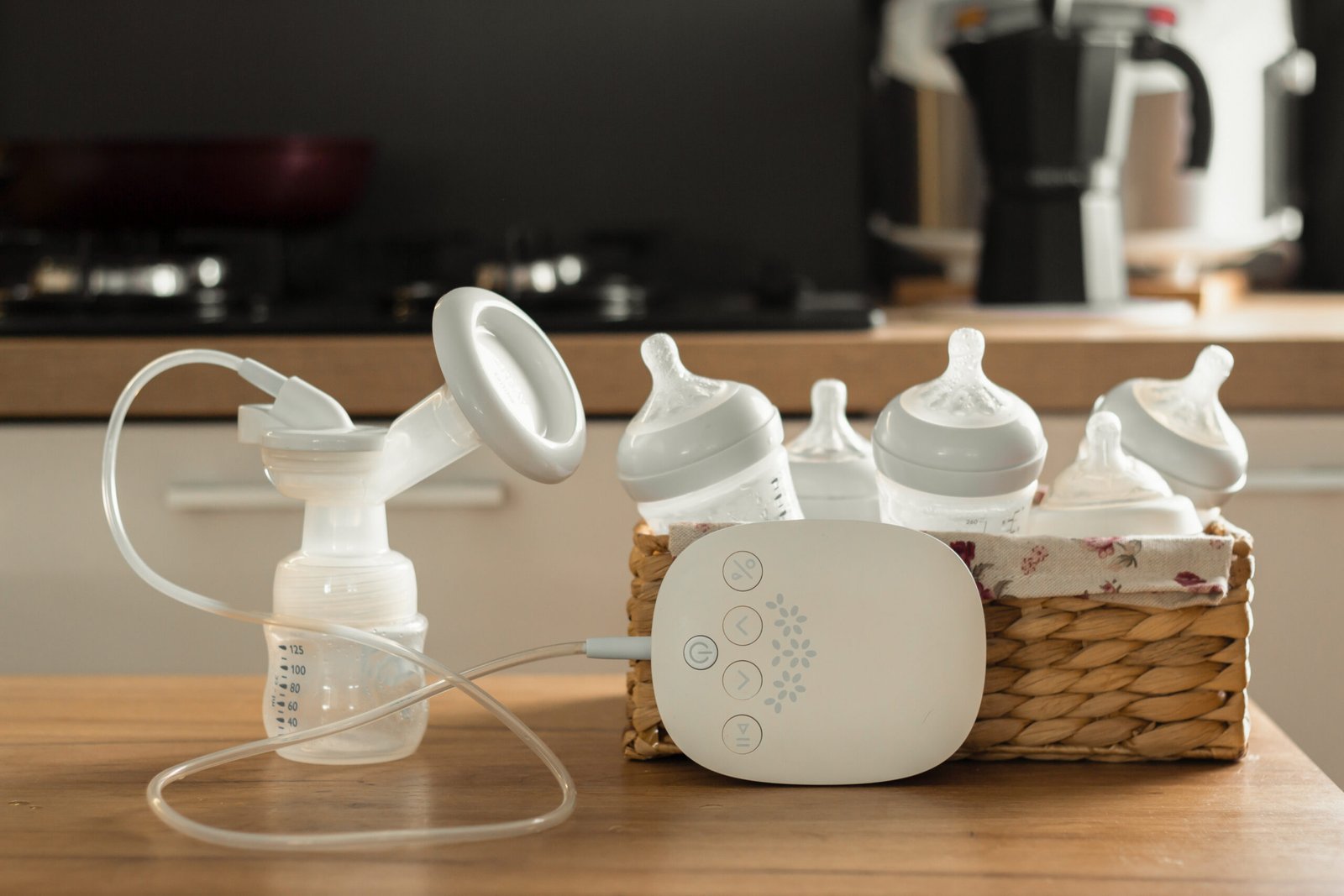Swaddling is a traditional practice that has been used across cultures for centuries to help soothe newborns and promote better sleep. This comprehensive guide explores the benefits, techniques, safety considerations, and types of swaddling blankets available in 2025, based on the latest research and expert recommendations.

What is Swaddling?
Swaddling is the practice of wrapping a baby snugly in a thin blanket or cloth, creating a secure environment that mimics the feeling of being in the womb. This technique has been shown to help calm babies, reduce crying, and promote longer, more restful sleep.
A swaddle blanket is specifically designed for this purpose – typically made from breathable, stretchy fabric that allows for secure wrapping while maintaining proper temperature regulation and hip movement.
Benefits of Swaddling
According to the latest research and expert opinions from 2025, swaddling offers numerous benefits for both babies and parents:
For Babies:
1. Prevents the Moro (Startle) Reflex:
– The Moro reflex is an involuntary response where babies suddenly throw their arms outward, often waking themselves up
– Swaddling keeps arms secure, preventing this reflex from disrupting sleep
– This reflex typically fades between 3-6 months of age
2. Promotes Better Sleep:
– Research shows swaddled babies often sleep longer and more soundly
– Helps babies transition more easily between sleep cycles
– Creates a familiar, womb-like environment that feels secure
3. Reduces Crying and Fussiness:
– Studies indicate swaddled babies cry less compared to unswaddled babies
– The gentle pressure provides a calming effect
– Particularly effective for colicky babies
4. Supports Neuromuscular Development:
– For preterm infants, proper swaddling has been shown to improve neuromuscular development
– Reduces physiological distress
– Improves motor organization and self-regulatory abilities
5. Helps Regulate Body Temperature:
– Maintains consistent body temperature without overheating
– Breathable fabrics allow for proper air circulation
6. Provides Pain Relief:
– Research indicates swaddling can help soothe pain in infants
– Often used in conjunction with other comfort measures during medical procedures
For Parents:
1. Increased Confidence in Handling:
– Swaddled babies are often easier to hold and transfer
– Reduces parental anxiety about waking a sleeping baby
2. More Restful Sleep:
– When babies sleep better, parents sleep better
– Reduces sleep deprivation and associated stress
3. Promotes Back Sleeping:
– Encourages the recommended safe sleep position (on back)
– May reduce SIDS risk when used properly
Types of Swaddle Blankets in 2025
The market for swaddle blankets has evolved significantly, with various options available to suit different preferences and needs:
1. Traditional Swaddle Blankets
Description: Large, square or rectangular pieces of fabric that require manual folding and wrapping techniques.
Materials:
– Muslin cotton (lightweight, breathable)
– Bamboo rayon blends (soft, temperature-regulating)
– Organic cotton (hypoallergenic, environmentally friendly)
Benefits:
– Versatility (can be used for other purposes as baby grows)
– Adjustable tightness
– Often more affordable
– Multiple size options
Popular Brands in 2025:
– Milk Snob (rayon-blend dual-layer design)
– Aden + Anais
– Solly Baby
– Little Unicorn
2. Velcro/Hook-and-Loop Swaddles
Description: Pre-shaped swaddles with Velcro or hook-and-loop closures for easy and secure fastening.
Benefits:
– Easier for parents to use, especially at night
– More consistent swaddling technique
– Less likely to come undone
– Good for babies who can wiggle out of traditional swaddles
Popular Brands in 2025:
– SwaddleMe
– Halo SleepSack Swaddle
– Ollie Swaddle
– Love To Dream
3. Zip-Up Swaddles
Description: Swaddles with zipper closures that create a secure pouch for the baby.
Benefits:
– Extremely easy to use
– Secure containment
– Often designed for easy diaper changes
– Good for strong babies who break out of other swaddles
Popular Brands in 2025:
– Nested Bean
– Happiest Baby Sleepea
– Zipadee-Zip (transitional swaddle)
– Kyte Baby Sleep Bag
4. Transitional Swaddles
Description: Designed to help babies transition from being fully swaddled to having arms free.
Benefits:
– Adaptable as baby grows and develops
– Helps with the transition away from swaddling
– Extended use period
– Reduces the need to purchase multiple products
Popular Brands in 2025:
– Love To Dream Swaddle UP Transition Bag
– Halo SleepSack Swaddle Transition
– Nested Bean Zen Sack
– Merlin’s Magic Sleepsuit
5. Weighted Swaddles
Note: The American Academy of Pediatrics (AAP) advises caution with weighted swaddles. They should never place too much pressure on a baby’s chest or lungs.
Description: Swaddles with lightly weighted areas designed to mimic the feeling of being held.
Benefits:
– May provide additional comfort for some babies
– Can help with transition from being held to being put down
– Often used for babies with sensory needs
Safety Considerations:
– Must follow manufacturer guidelines precisely
– Weight should be minimal and appropriately distributed
– Not recommended for all babies
Proper Swaddling Techniques
Basic Swaddling Method (Diamond Technique)
1. Prepare the Blanket:
– Lay the blanket flat in a diamond shape
– Fold down the top corner slightly
2. Position the Baby:
– Place baby face-up on the blanket
– Align shoulders with the fold, head above the fold
3. Secure First Side:
– Straighten baby’s left arm
– Take the right corner of the blanket
– Pull it across baby’s body, tucking it under their right side
4. Bottom Corner:
– Fold the bottom corner up over baby’s feet
– Tuck it under the first fold if there’s enough fabric
5. Complete the Swaddle:
– Straighten baby’s right arm
– Take the left corner of the blanket
– Wrap it across baby’s body and around to the back
– Tuck it under to secure
Hip-Healthy Swaddling
The International Hip Dysplasia Institute and the American Academy of Pediatrics recommend “hip-healthy swaddling” that allows for proper hip development:
1. Allow Room for Leg Movement:
– Ensure the swaddle is loose around the hips and legs
– Baby’s legs should be able to bend up and out at the hips
2. Avoid Straightening Legs:
– Don’t force legs to be straight or pressed together
– The natural position for newborns is with legs flexed and turned out
3. Check for Mobility:
– You should be able to fit 2-3 fingers between the baby’s chest and the swaddle
– Baby’s hips should move freely within the swaddle
Signs of Proper Swaddling
A properly swaddled baby should:
– Have room to move hips and legs
– Be able to breathe comfortably
– Not have the swaddle covering any part of the face
– Have a snug but not tight wrap around the upper body
– Not show signs of overheating (sweating, flushed cheeks, rapid breathing)
Safety Guidelines for Swaddling
When to Swaddle
– Best time to start: From birth
– When to use: During sleep times and when baby is fussy
– Duration: Short periods while awake, longer periods for sleep
When to Stop Swaddling
According to the American Academy of Pediatrics and updated 2025 guidelines:
– Stop when baby shows signs of rolling over (typically between 2-4 months)
– Transition options:
– Swaddle with one arm out initially
– Move to a sleep sack that allows arm movement
– Use a transitional swaddle product
Critical Safety Considerations
1. Always place swaddled babies on their backs to sleep
– Never place a swaddled baby on their stomach or side
– Risk of SIDS increases if a swaddled baby rolls onto their stomach
2. Monitor for overheating
– Signs include sweating, damp hair, flushed cheeks, heat rash, rapid breathing
– Use lightweight, breathable fabrics
– Keep room at appropriate temperature (68-72F/20-22C)
3. Ensure proper hip positioning
– Avoid tight swaddling around the hips and legs
– Allow for natural movement to prevent hip dysplasia
4. Check swaddle security
– Swaddle should not come loose during sleep
– Loose blankets pose suffocation risks
– If using traditional blankets, check swaddle technique
5. Never use weighted swaddles or blankets that place pressure on chest
– Can restrict breathing and chest movement
– Follow AAP guidelines for safe sleep
Common Swaddling Concerns and Solutions
“My Baby Fights the Swaddle”
Solutions:
– Try different swaddling techniques or products
– Swaddle with arms in different positions (across chest or hands-to-face)
– Ensure baby isn’t hungry, wet, or uncomfortable before swaddling
– Try swaddling when baby is already drowsy
– Consider a transitional swaddle that allows some arm movement
“My Baby Seems Too Hot When Swaddled”
Solutions:
– Use lighter, more breathable fabrics
– Dress baby in fewer layers underneath the swaddle
– Keep room temperature moderate
– Look for signs of overheating and adjust accordingly
– Consider swaddles specifically designed for temperature regulation
“My Baby Breaks Out of the Swaddle”
Solutions:
– Try a more secure swaddling product (Velcro or zip-up styles)
– Check your swaddling technique for proper tightness
– Consider a swaddle designed for stronger babies
– Make sure the swaddle is the right size for your baby
“I’m Worried About Hip Development”
Solutions:
– Follow hip-healthy swaddling guidelines
– Ensure swaddle is loose around the hips and legs
– Look for swaddles designed with hip health in mind
– Alternate between swaddling and unswaddled time
– Discuss concerns with your pediatrician
Transitioning Away from Swaddling
As babies grow and develop, they will eventually need to transition away from swaddling. Here’s how to make this process smoother:
Gradual Transition Methods
1. One Arm Out:
– Start by swaddling with one arm free
– After several successful nights, free both arms
– Continue to wrap the torso for comfort
2. Transitional Products:
– Use products specifically designed for swaddle transitions
– These often allow for some movement while still providing security
3. Sleep Sacks:
– Move to a wearable blanket or sleep sack
– These provide warmth without restriction
– Can be used safely long after swaddling ends
Signs Your Baby is Ready to Transition
– Showing signs of rolling over
– Consistently breaking out of the swaddle
– Seems more restless when swaddled than when free
– Has improved head and neck control
– Age (approaching 3-4 months)
Alternative Uses for Swaddle Blankets
Swaddle blankets are versatile and can serve multiple purposes beyond swaddling:
1. Nursing Cover: Privacy while breastfeeding in public
2. Stroller or Car Seat Cover: Protection from sun, wind, or light
3. Play Mat: Clean surface for tummy time
4. Burp Cloth: Extra large surface for protection
5. Light Blanket: General use as baby grows
6. Changing Pad Cover: Emergency backup when traveling
7. Shade: Draped over stroller or car window
8. Comfort Item: Familiar scent and feel as baby grows
Choosing the Right Swaddle Blanket for Your Baby
Factors to Consider
1. Material:
– Breathability (important for temperature regulation)
– Softness (for sensitive newborn skin)
– Stretch (allows for secure swaddling)
– Durability (withstands frequent washing)
2. Size:
– Large enough to create a secure swaddle (typically 40″x40″ or larger)
– Appropriate for baby’s size and age
3. Design:
– Ease of use (especially important for middle-of-night changes)
– Closure type (traditional, Velcro, zipper)
– Accessibility for diaper changes
4. Season:
– Lighter fabrics for summer
– Slightly heavier options for winter
– Layering options for variable temperatures
5. Special Features:
– Two-way zippers for easy diaper access
– Adjustable fit as baby grows
– Transitional design elements
Best Practices for Swaddle Care
1. Washing:
– Follow manufacturer instructions
– Generally machine washable on gentle cycle
– Use mild, baby-safe detergent
– Wash before first use to remove manufacturing chemicals
2. Drying:
– Many can be tumble dried on low
– Some premium fabrics may require air drying
– Avoid high heat which can damage elastic or closures
3. Storage:
– Keep clean swaddles easily accessible
– Store in a dry place to prevent mildew
– Consider having multiple swaddles in rotation
Expert Recommendations for 2025
Based on the latest research and pediatric guidance from 2025:
1. American Academy of Pediatrics (AAP):
– Recommends safe swaddling as an effective technique to help calm infants and promote sleep
– Emphasizes back sleeping for swaddled infants
– Advises stopping swaddling when babies show signs of rolling over
– Cautions against tight swaddling around hips and legs
2. International Hip Dysplasia Institute:
– Promotes “hip-healthy swaddling” techniques
– Recommends swaddles that allow for natural leg position
– Provides visual guides for proper hip positioning
3. Sleep Specialists:
– Recognize swaddling as an effective tool for establishing healthy sleep patterns
– Recommend consistent use as part of a bedtime routine
– Advise on proper transition techniques when swaddling ends
4. Pediatric Research:
– Confirms benefits for both full-term and preterm infants
– Shows improved neuromuscular development with proper swaddling
– Indicates reduced crying and improved sleep quality
Conclusion
Swaddling remains a valuable technique for soothing newborns and promoting better sleep in 2025. When done correctly, following safety guidelines and using appropriate products, swaddling can benefit both babies and parents during the challenging newborn period. As with all parenting practices, it’s important to observe your baby’s cues and consult with healthcare providers about individual needs and concerns.
By understanding the proper techniques, safety considerations, and product options available, parents can confidently incorporate swaddling into their baby care routine, helping to create a secure and comfortable environment for their newborn.
Discuss Swaddling with your health care professional.
Sources
– Milk Snob, “Everything You Ever Hoped to Know About Swaddle Blankets,” January 2025
– Taking Cara Babies, “Should I Swaddle My Baby?,” January 2025
– HealthyChildren.org (American Academy of Pediatrics), “Swaddling: Is it Safe for Your Baby?,” 2022
– International Hip Dysplasia Institute, “Hip-Healthy Swaddling,” 2024
– BleuRibbon, “Best Swaddles & Baby Blankets 2025,” October 2024
– Consumer Reports, “How and When to Use Swaddles and Sleep Sacks for Your Baby,” October 2024



